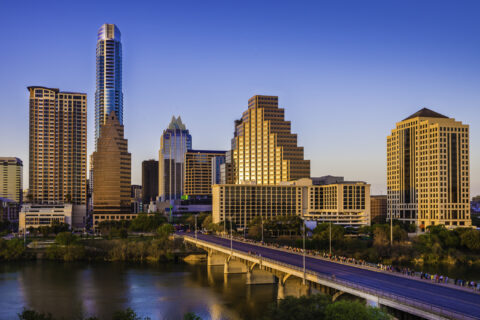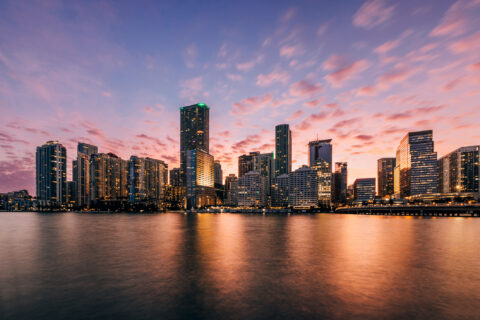City leaders (and NLC staff!) heaved a collective sigh of relief on March 11, 2021, when Congress approved the American Rescue Plan Act with direct aid to municipalities. But the $65.1 billion set aside for municipalities is just a fraction of the total $1.9 TRILLION allocated. A lesson learned from initial rounds of emergency aid is that the success of programs targeting aid to Main Street storefronts and small-business owners depends on a high level of engagement and intervention of local governments. Local leaders that want to do their part to stabilize the economy and put people back to work need to know how these programs operate, and how to make these programs fit your cities specific circumstances and needs.
There are several different targeted funds for small businesses, all administered by the Small Business Administration (SBA). While these funds will flow from the SBA directly to small businesses, there are obstacles that city leaders can address to ensure funds are distributed equitably and reach entrepreneurs of color who have been hardest hit by COVID-19. Elected leaders and/or economic development staff should convene service providers that support business owners from Black, Latinx, Indigenous, and other people of color communities (BIPOC) to help them prepare competitive applications for federal relief. They should also set local goals and develop benchmarks to measure success for the number of applications received and processed from minority, women, and/or veteran business owners. NLC recently published Five Principles for ARP Implementation, which will help you get ready to effectively manage any aspect of the ARP program.
Targeted small business funding includes:
$7.25 billion in additional funding for the Paycheck Protection Program, with expanded eligibility for nonprofit borrowers. NLC previously published Five Steps to PPP Readiness, with suggestions for how city leaders can help local businesses get ready for successful loan applications, which are made through private lenders and banking institutions. PPP loans may be forgiven if the business meets certain targets for retaining jobs or rehiring employees.
$15 billion for Targeted Economic Injury Disaster Loan Advance, which helps small businesses cover financial obligations and operating expenses that they would have been able to cover had it not been for the pandemic. These funds will provide up to $10,000 in forgivable loans for businesses in low income communities that were previously approved for EIDL loans, and SBA will be reaching out to previous applicants that qualify.

$1.25 billion for the Shuttered Venue Operator Grant, which covers live venue operators and promotors, theaters, performing arts organizations, and movie theaters that had at least a 25% drop in revenue. First priority will be given to entities that suffered the greatest loss in revenue, with the first two weeks of applications open only to those who can show a 90% or greater loss of revenue between April and December 2020. These grants opened April 8th and applications are accepted directly through the SBA.
$28.6 billion for the new Restaurant Revitalization Grant Fund, which could be open for applications as soon as the end of April. Guidance on appropriate uses of these funds are in development by the SBA, but we will provide updates as soon as we learn more.
$100 million to establish a Community Navigator Pilot Program to help business owners sidelined in initial rounds of federal relief successfully navigate the application process. With a focus on minority-, women-, and veteran-owned businesses, as well as rural businesses, these Navigators will be located at SBA resource partners like Small Business Development Centers, Women’s Business Centers, Service Corps of Retired Executives, and SBA district offices. If your community has an organization that would like to host a Community Navigator Program, look for a grant funding opportunity opening soon through SBA.
The American Rescue Plan also included $10 billion for the State Small Business Credit Initiative, which is designed to “ensure business enterprises owned and controlled by socially and economically disadvantaged individuals have access to credit and investments”. This is a competitive grant program which will be open to any state, territory, or tribal government, with a final grant application due in December 2021. Make sure your state government knows your community’s needs and understands how you envision this capital supporting local business owners, so they can incorporate that into their application.
As with all other funding under the American Rescue Plan, building strong partnerships and being strategic about how you use each revenue source is key. Although city leaders don’t have a formal role in how many of these funds are administered, you have a very important role in advocating for local needs and communicating the impact of federal relief. Invite your Congressional Delegation to the reopening of a shuttered venue; hold a press conference at a restaurant that has been able to keep its doors open; tell the story of how your local Small Business Development Center helped entrepreneurs in your community apply for a loan. You are critical to ensuring the success of the American Rescue Plan, and we are here to help you. Visit NLC’s ARP Resource Page for all the latest events and information, including an informational call with our Federal Advocacy Team to get you the latest news.









